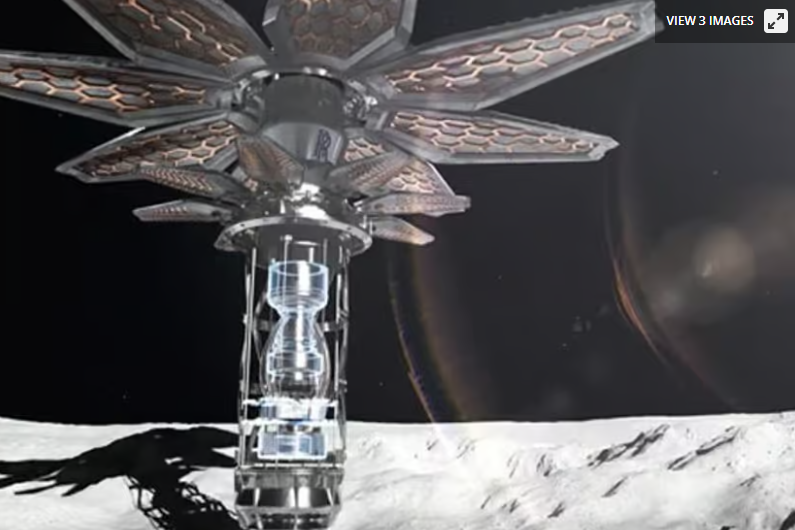
Under a UK Space Agency contract, Bangor University in Wales is developing a new nuclear fuel for the Rolls-Royce micro reactors that will power future crewed lunar outposts by 2030.
There's a new space race on with half a dozen nations and alliances clamoring for recognition as major 21st century spacefaring powers as they rush to put a new generation of landers and rovers on the Moon. This is as NASA ramps up to make good on its promise to establish a permanent human presence on the lunar surface.
A major hurdle of long-term missions or permanent outposts on the Moon is the 14-day lunar night when the daytime temperatures drop from 250 °F (120 °C) to -208 °F (-130 °C). This combination of freezing cold and darkness means that for machines and outposts to survive, never mind function, they need to rely on nuclear power systems. In the case of anything that needs to do real work, that means nuclear reactors rather than radio-thermal generators.
These reactors won't be like the large conventional reactors used on Earth that rely on fuel rods. Instead, these would be very small, factory-made reactors that use what is called TRi-structural ISOtropic (TRISO) particle fuel.
TRISO fuel is a variant of pebble bed reactor fuel, which replaces rods with billiard-ball-sized fuel globes. The Bangor TRISO fuel differs in that the balls are shrunk to the size of poppy seeds. Created by 3D printing, these fuel particles are made from enriched uranium, carbon and oxygen, with a uranium core sealed inside layers of carbon and ceramics.
Unlike fuel rods, these particles are extremely strong and handle very high temperatures, they are also resistant to damage from neutron irradiation, corrosion, and oxidation.
Under Professor in Nuclear Materials and Co-director of the Nuclear Futures Institute at Bangor University, Simon Middleburgh, Bangor is developing TRISO fuel that would be suitable for the Moon reactors being developed by Rolls-Royce and others. Not only can it be used for power reactors, but future nuclear propulsion systems.
The important thing about a TRISO-fueled reactor is that it's a relatively simple design that can be gas-cooled by keeping it in the shade of an umbrella of radiators attached to the coolant system. By operating at higher temperatures, these are more efficient than conventional pressure water reactors.
In operation, the fuel particles are fed into the top of the reactor. As the fuel is used up, they migrate to the bottom, where the spent fuel is removed. Because the reactor is at a higher temperature, if the reaction becomes too strong, the rise in heat tamps down the reaction, causing the reactor to return to safe levels.
"This project will harness the expertise in nuclear fuels which we have within the Nuclear Futures Institute and apply it to one of the most exciting applications possible: space exploration," said Middleburgh. "On the Moon and on planetary bodies that have day and night, we can no longer rely on the Sun for energy and therefore must design systems such as the small micro-reactor to sustain life. Nuclear power is the only way we currently have to provide the power for that length of space travel. The fuel must be extremely robust and survive the forces of launch and then be dependable for many years.
"This challenge is being met by excellent scientists and engineers at the Nuclear Futures Institute, but more will be required over the coming years and we hope that the new Engineering program at the university will provide a wealth of exciting opportunities for students who wish to apply themselves in these exciting areas of research and development."